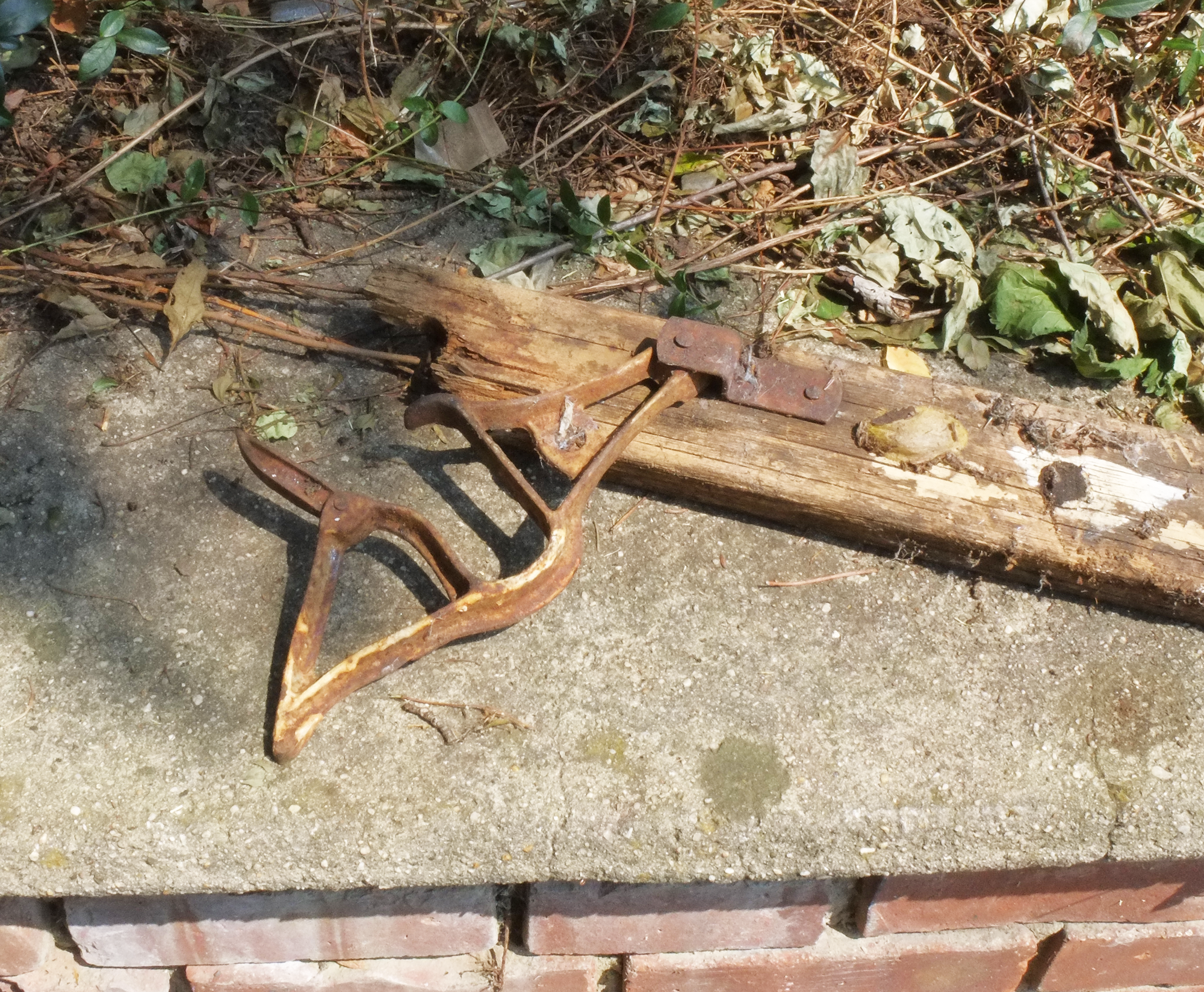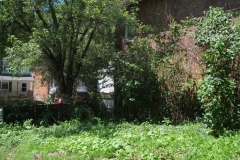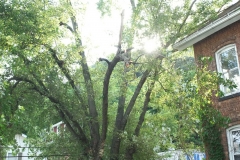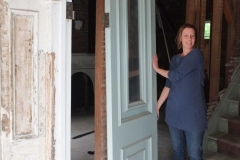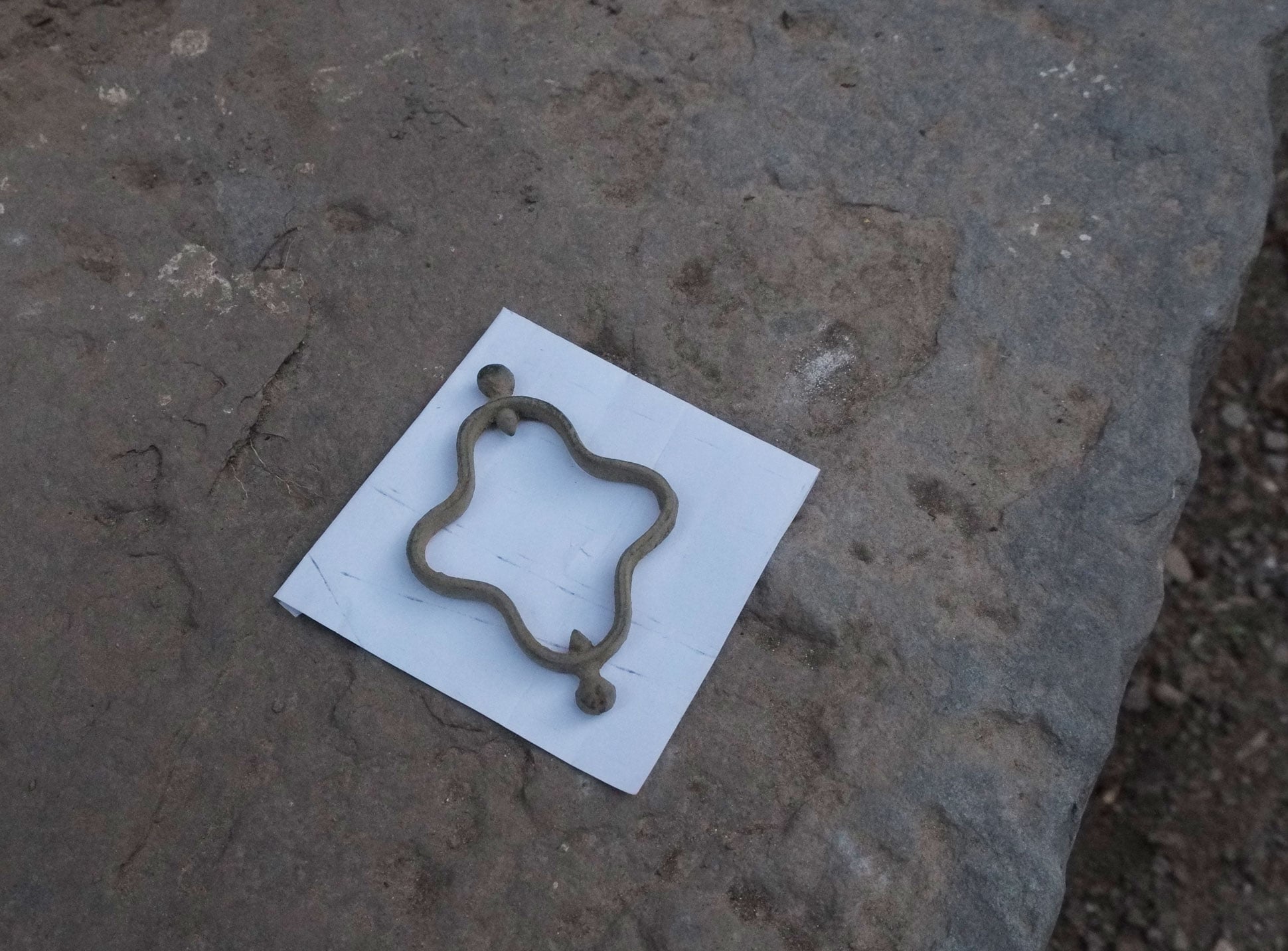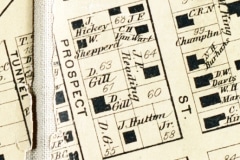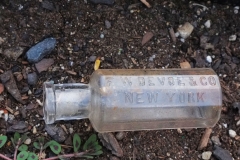Skip number five left our property this week. It was a hardcore only load, so stone, brick, concrete, glass etc. only. This can be reused so the charge to take it away is a lot less than disposing of rubbish etc. Skip number four cost almost $1200 due to overloading with concrete etc., hence the switch. I’m not sure Tom from Kingston Rollsoff usually does hardcore only skips, so thanks for sorting this out Tom. We also sieved a good many tons of soil from the path we dug out, taking out any stone, glass, rubbish we could. Took a couple of weeks to do this but the soil is good and we will reuse it in the garden at some point.
After shifting this much soil I was hoping to find something interesting, but pretty much all we found was the other part of the gyroscope, a few bones and lots more bits of the clay pipe, for which I’ll do an artistic reconstruction. From the number of bits, “c’est un très gros tuyau”, which reads “it is a very large pipe”, probably…
This skip was a good opportunity to break out the jackhammer so I took away the concrete outside of the garage. I would have kept this concrete had the garage not been in a state of collapse. You can see the cracks in the pictures and it’s a lot worse when you see it for real with all the walls bowing out 4-6″. Eventually, we will rebuild the garage with maybe a flat roof so that can be used, maybe as a deck. We will also make the garage shorter and narrower.
We did add an extra 20% to the skip after the picture was taken, so I think we did a pretty good job.
To get the soil out of the way we stuck it in the garage with our cute little boat (a Zuma, made by Laser).
To be honest, so far Aimee and I have just scrapped the surface in terms of things that need to be accomplished. That said we have saved ourselves many thousands of dollars by doing this labour ourselves. It’s easy to become overwhelmed with a project of this size, so we always have a copy of “Hitch Hikers Guide” close at hand. DON’T PANIC.

